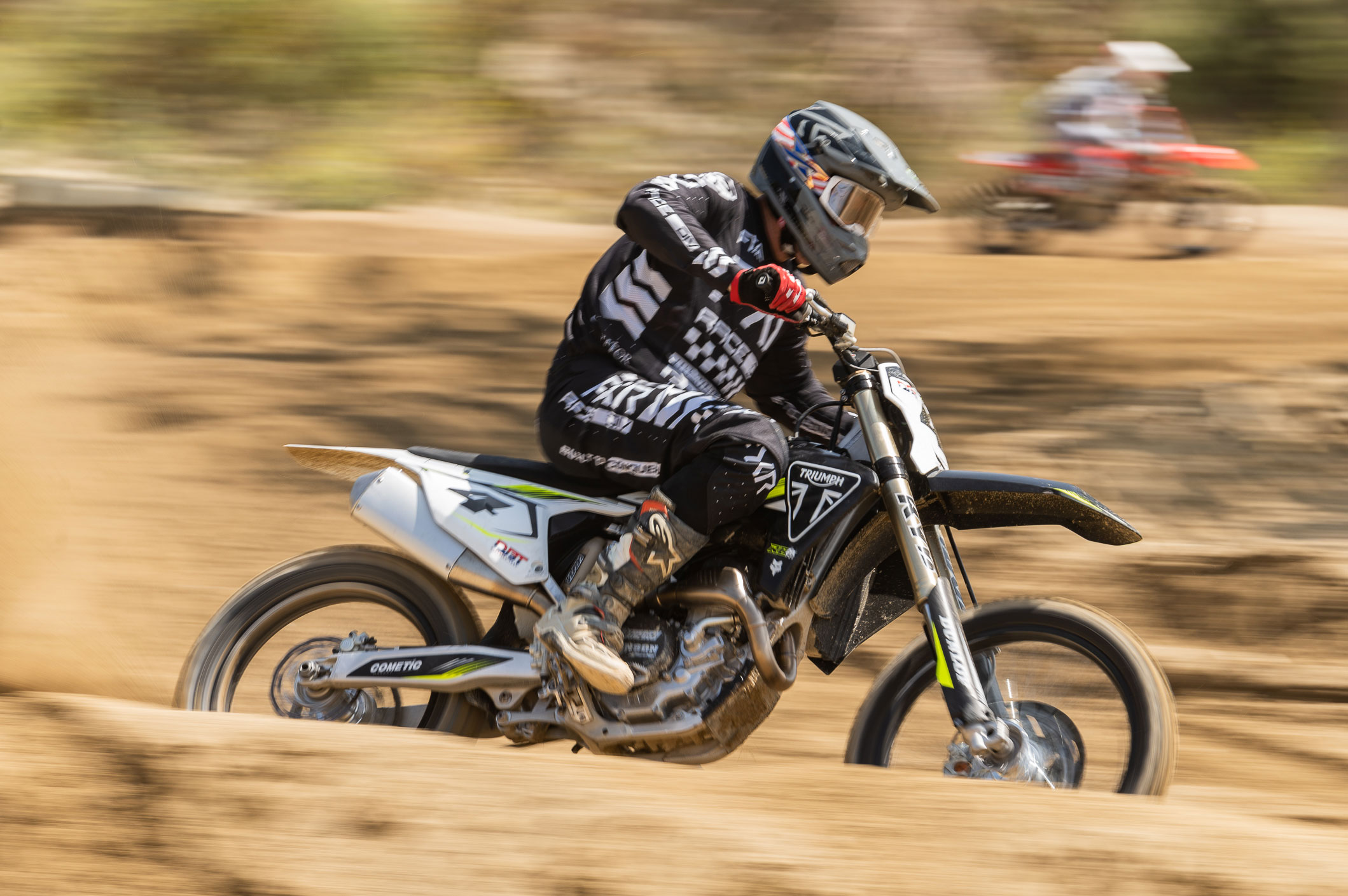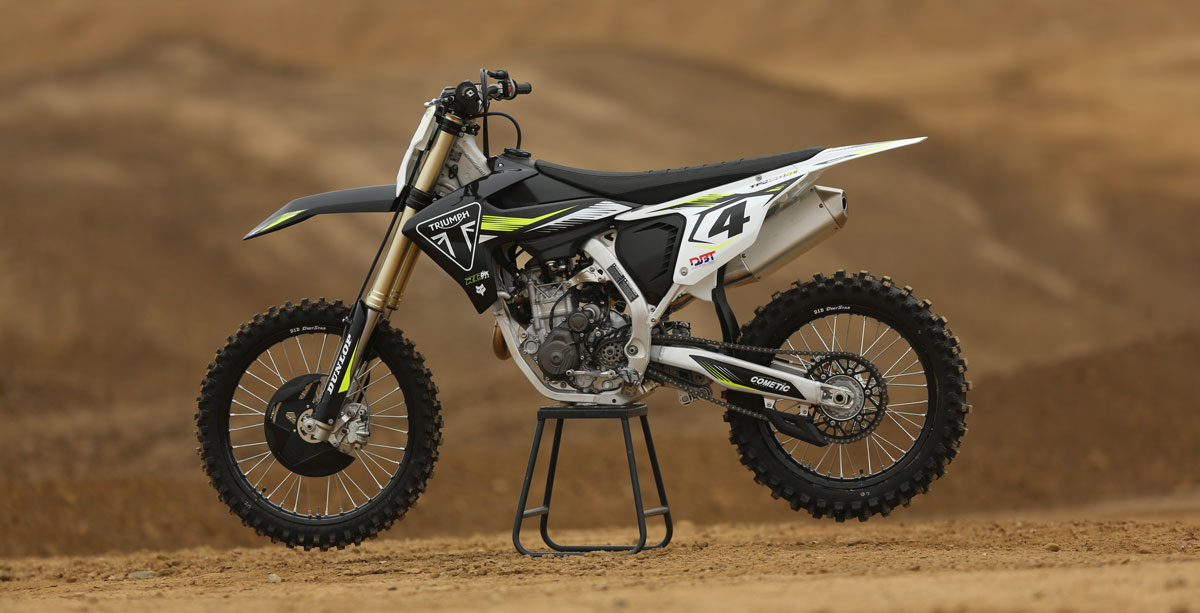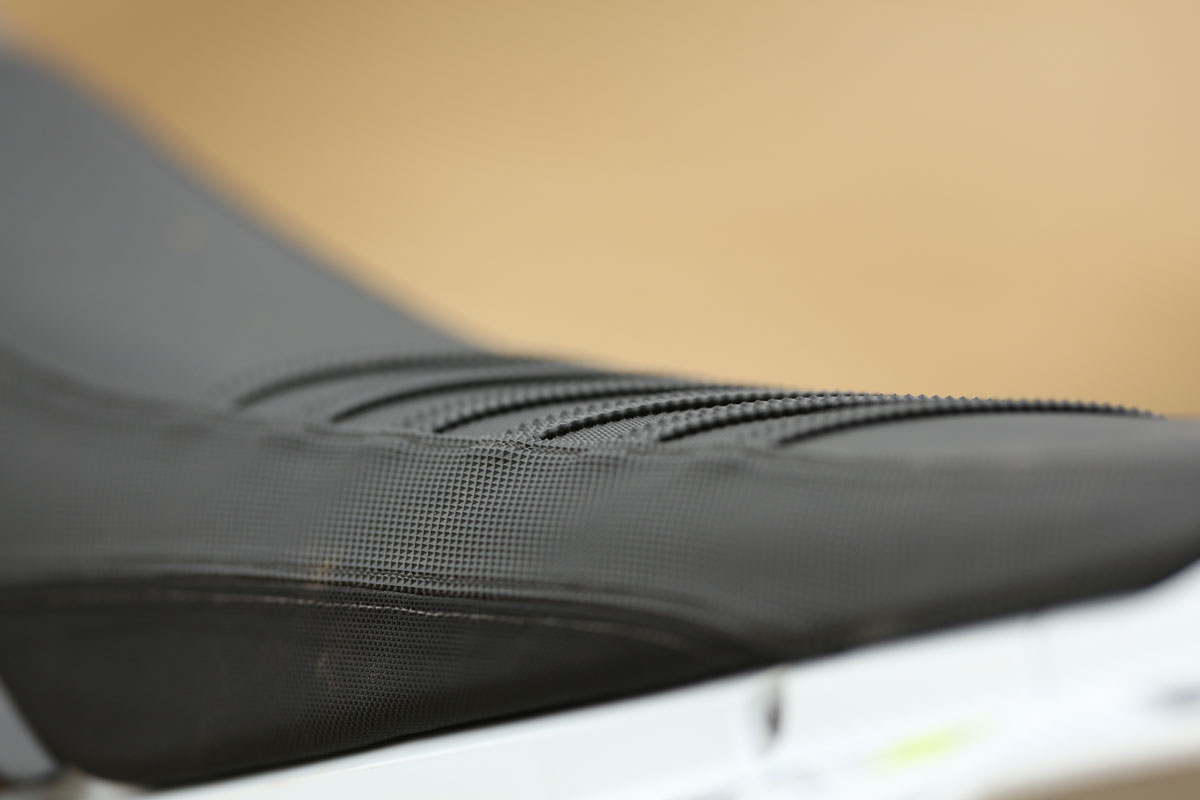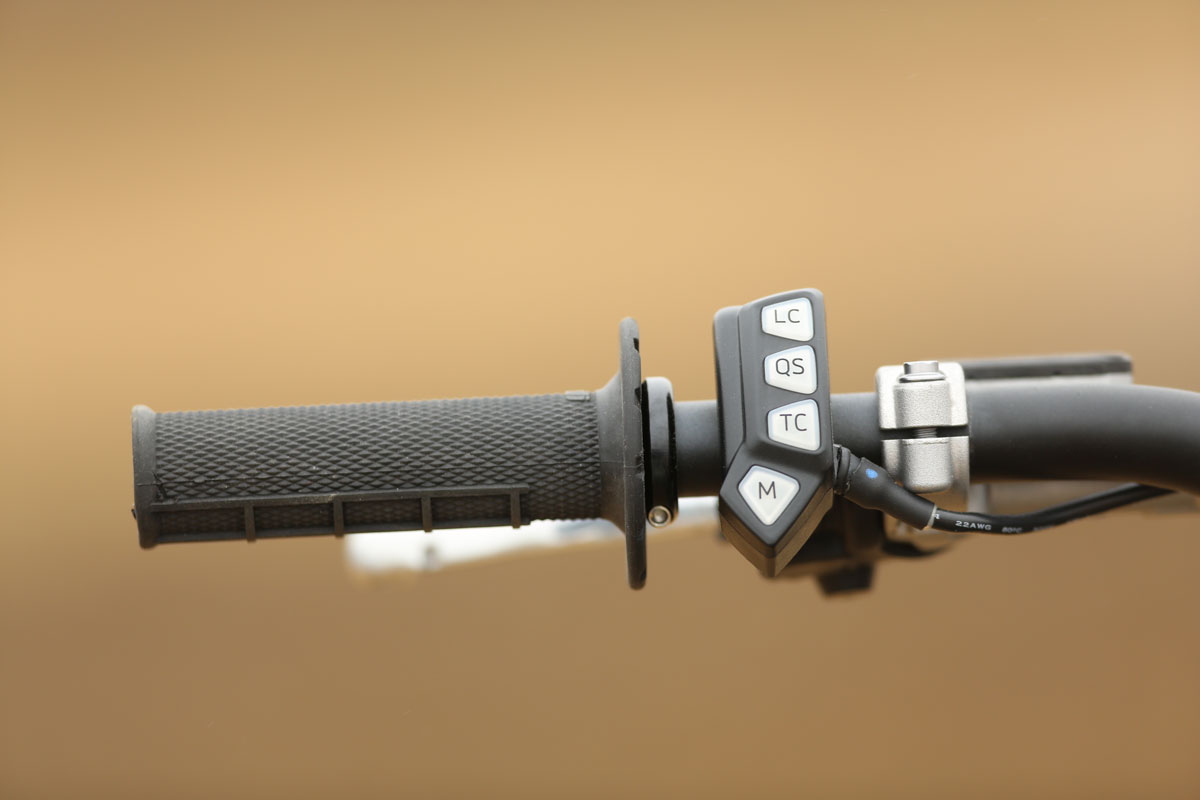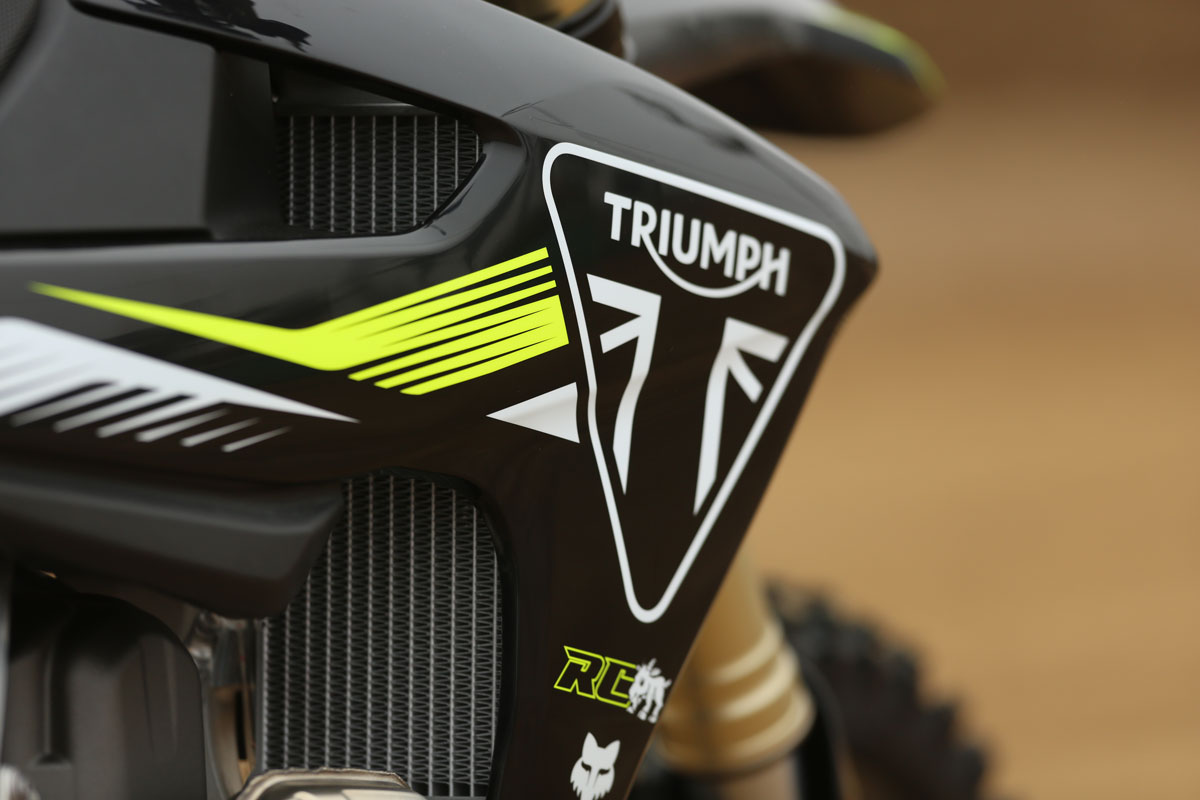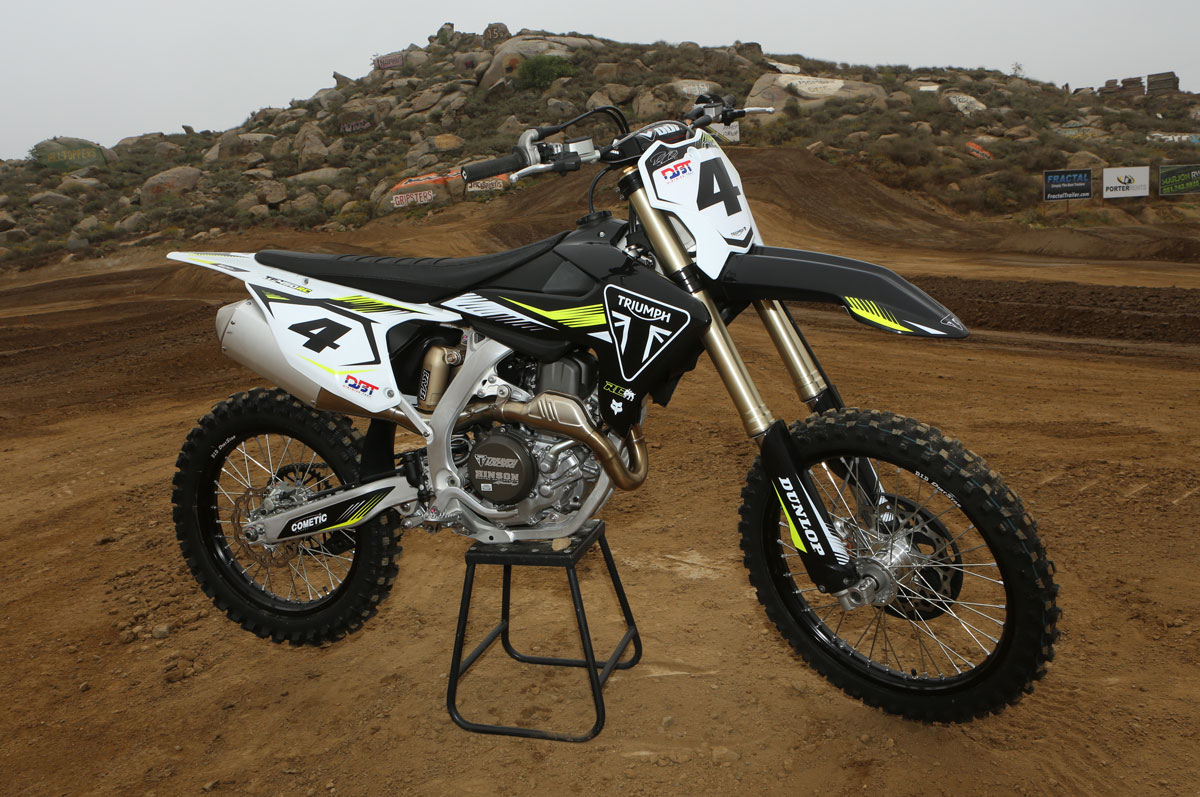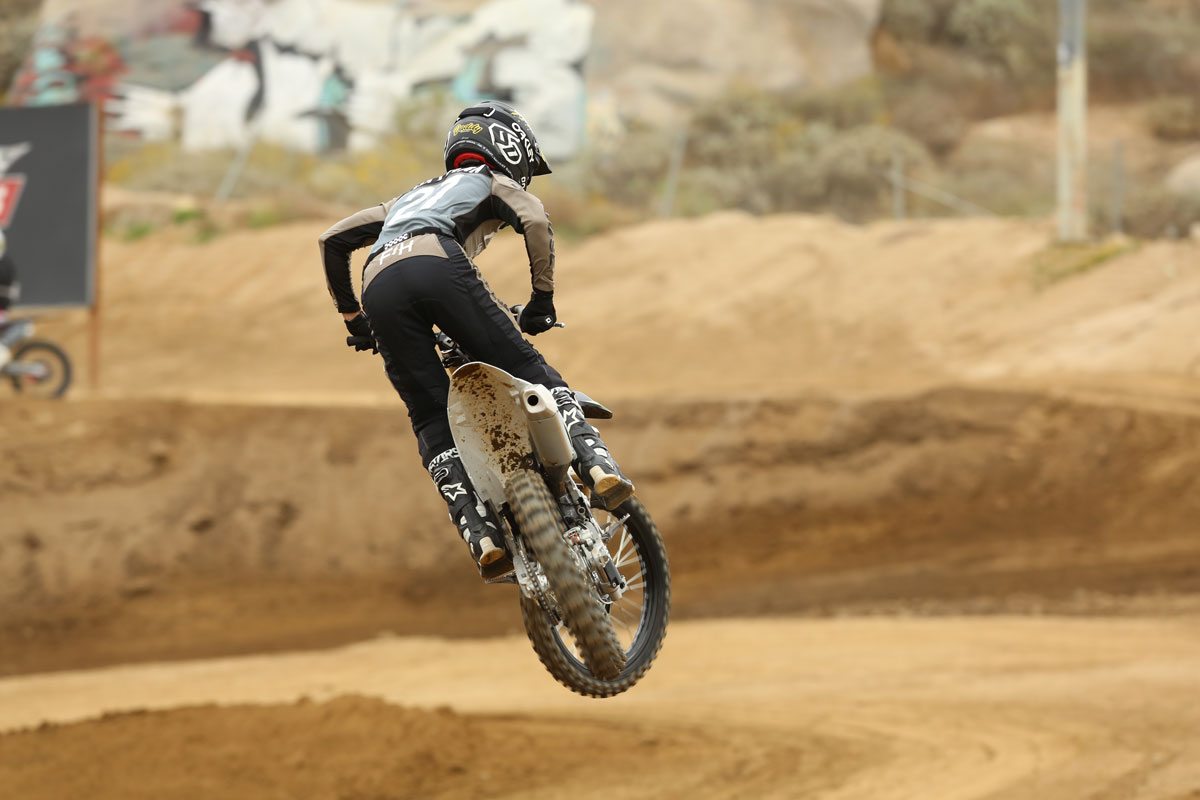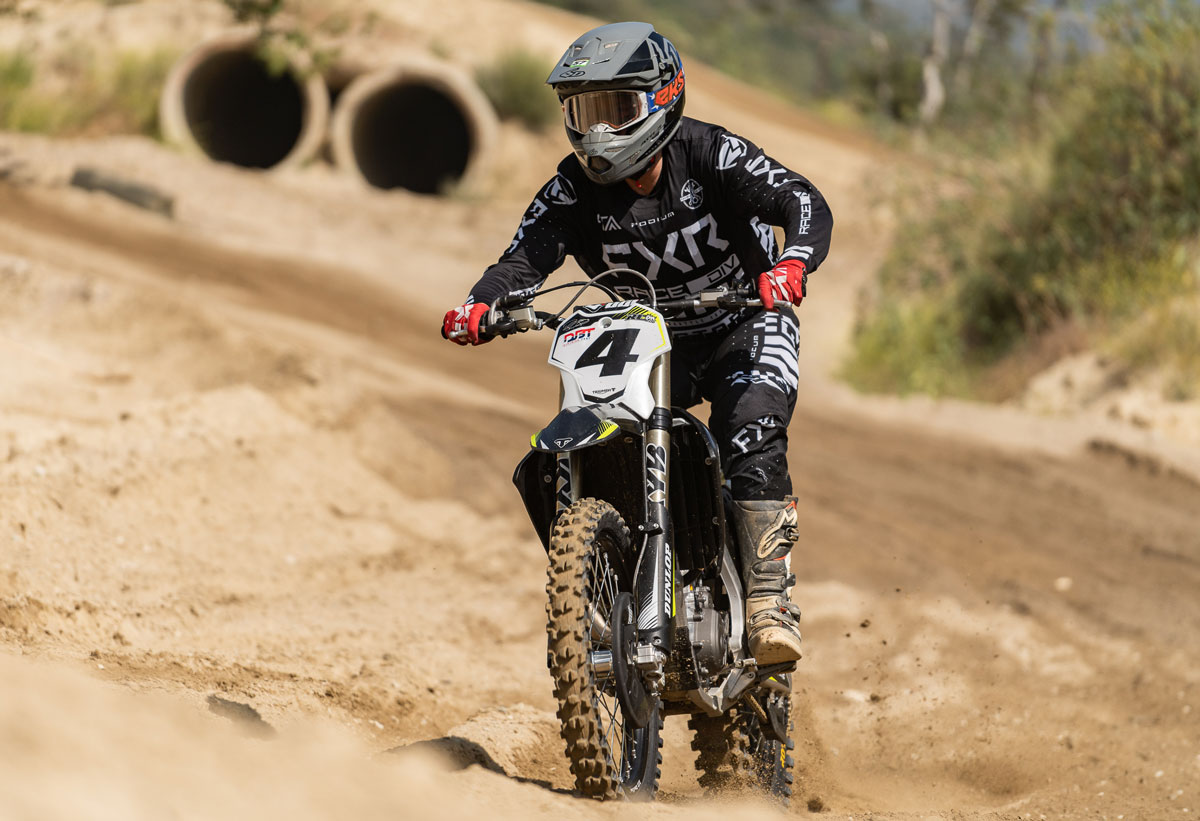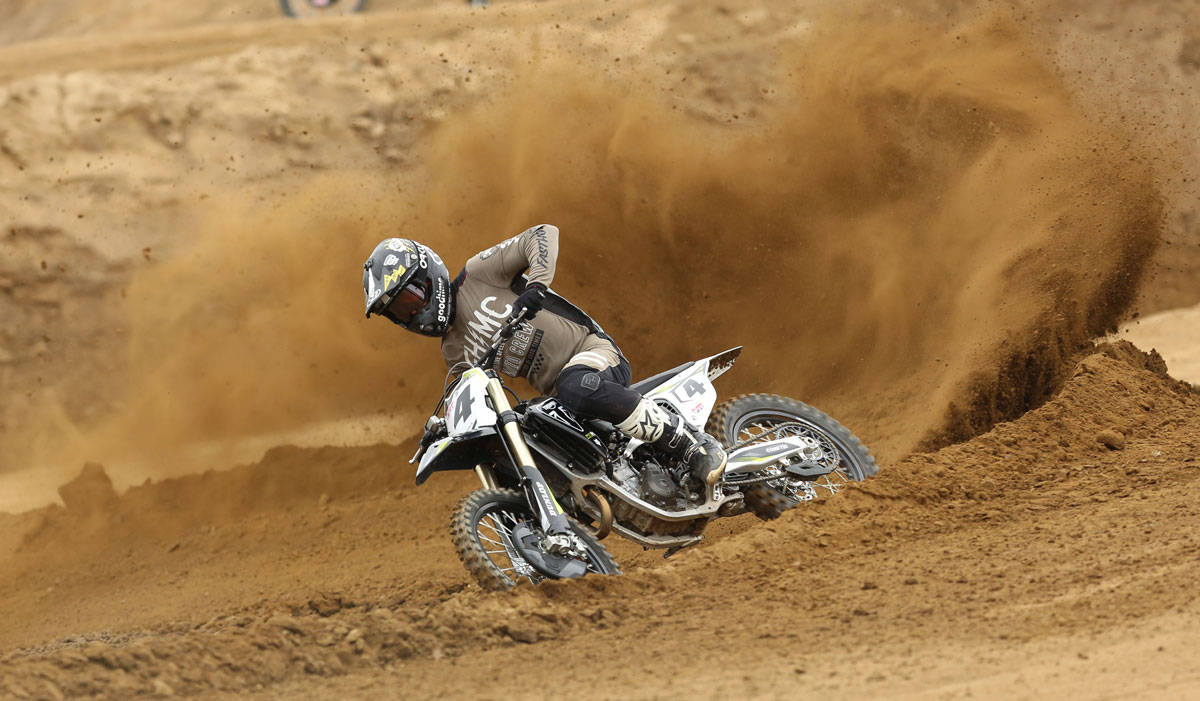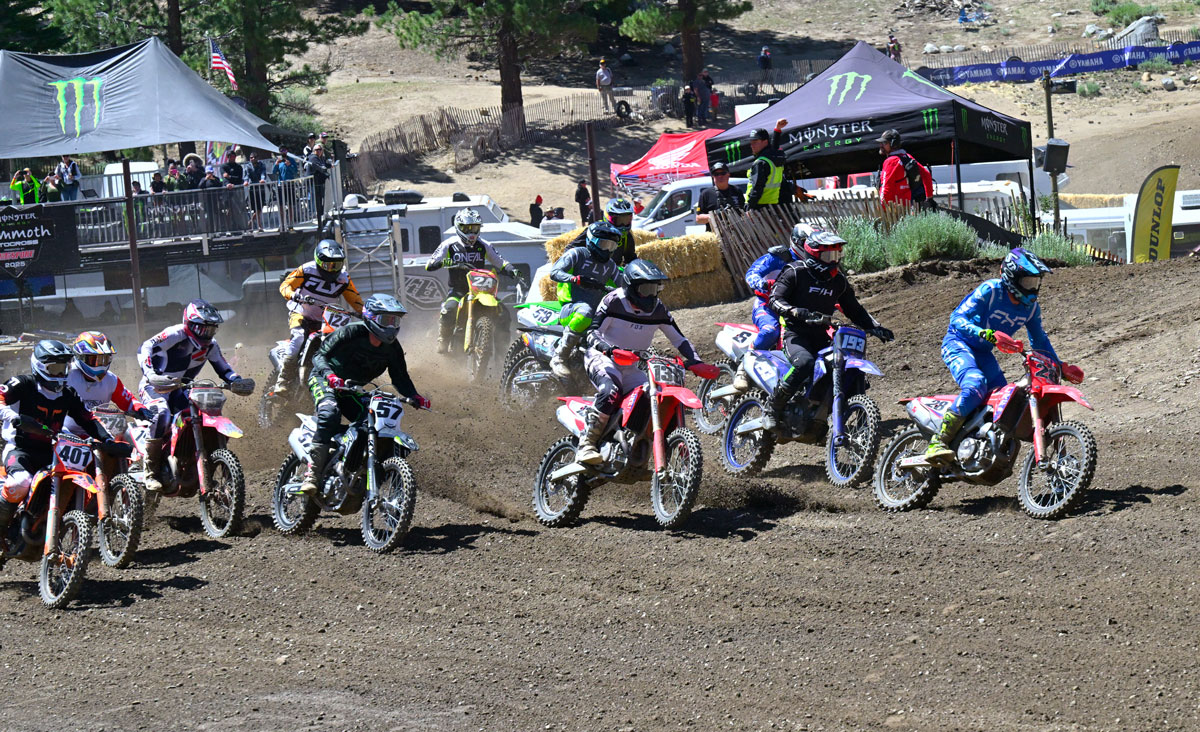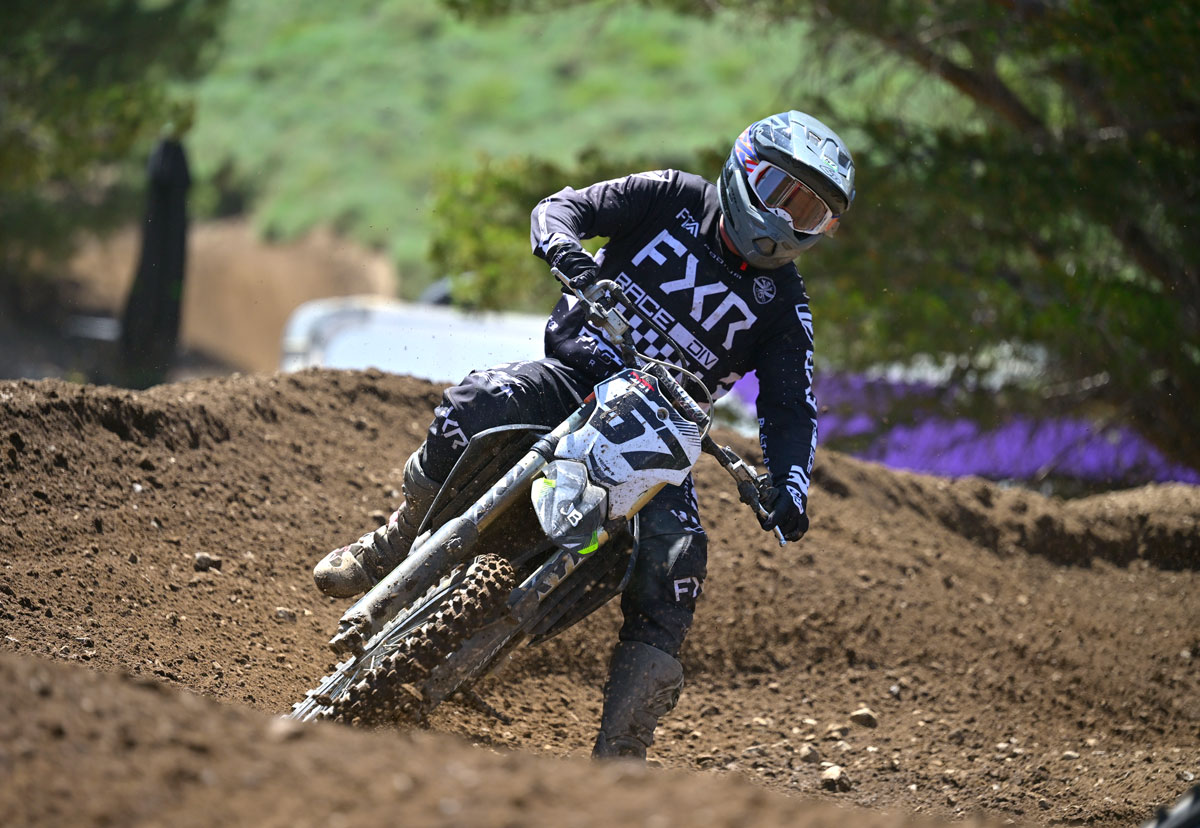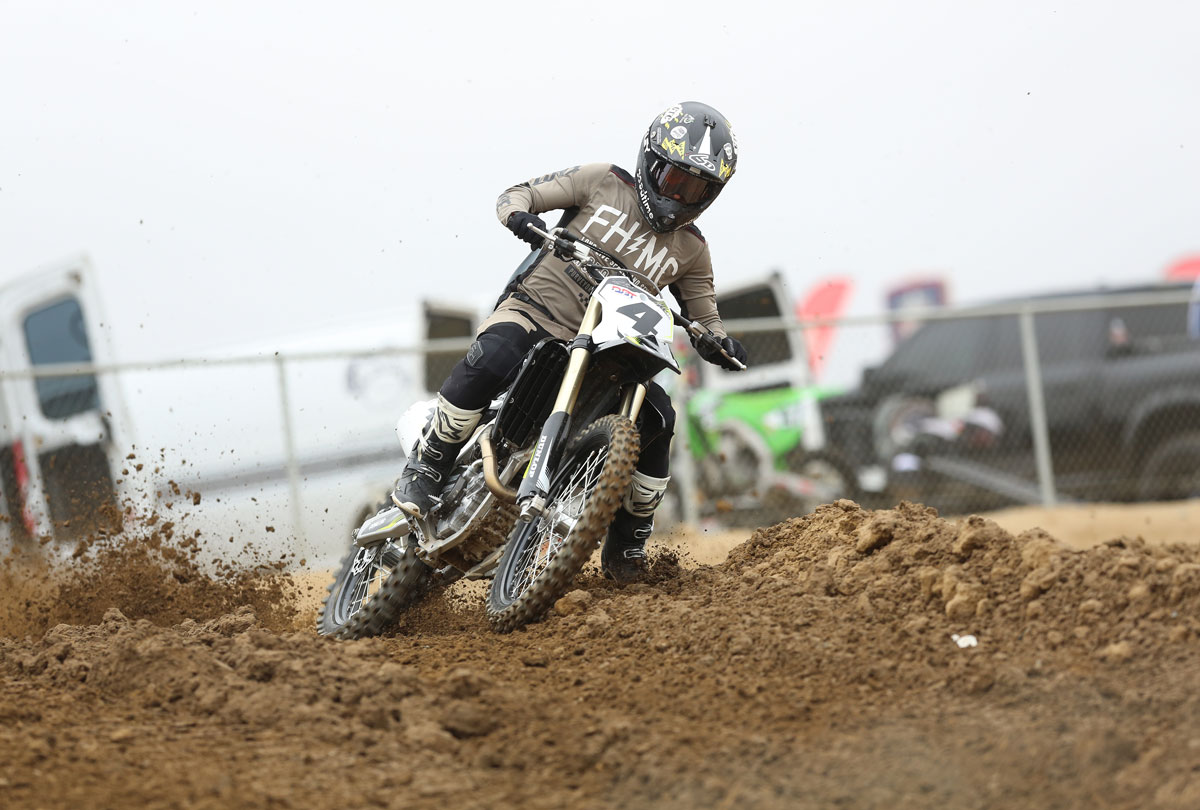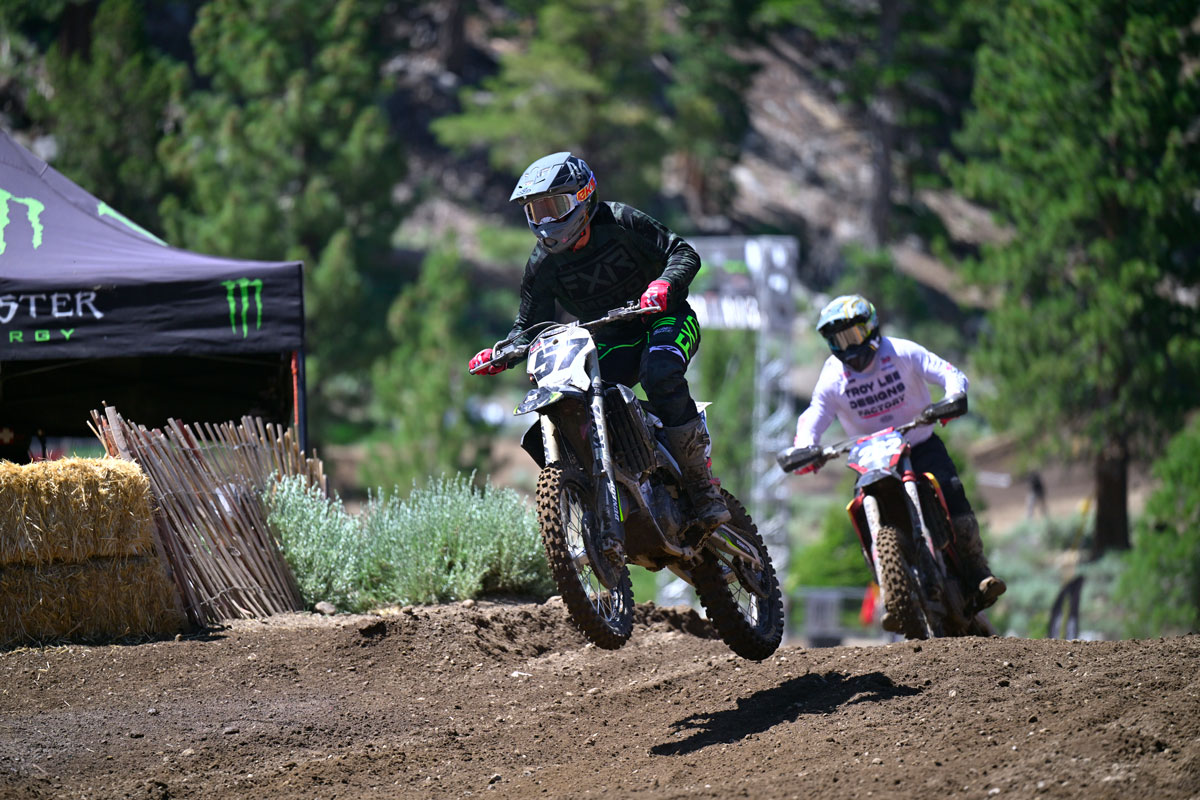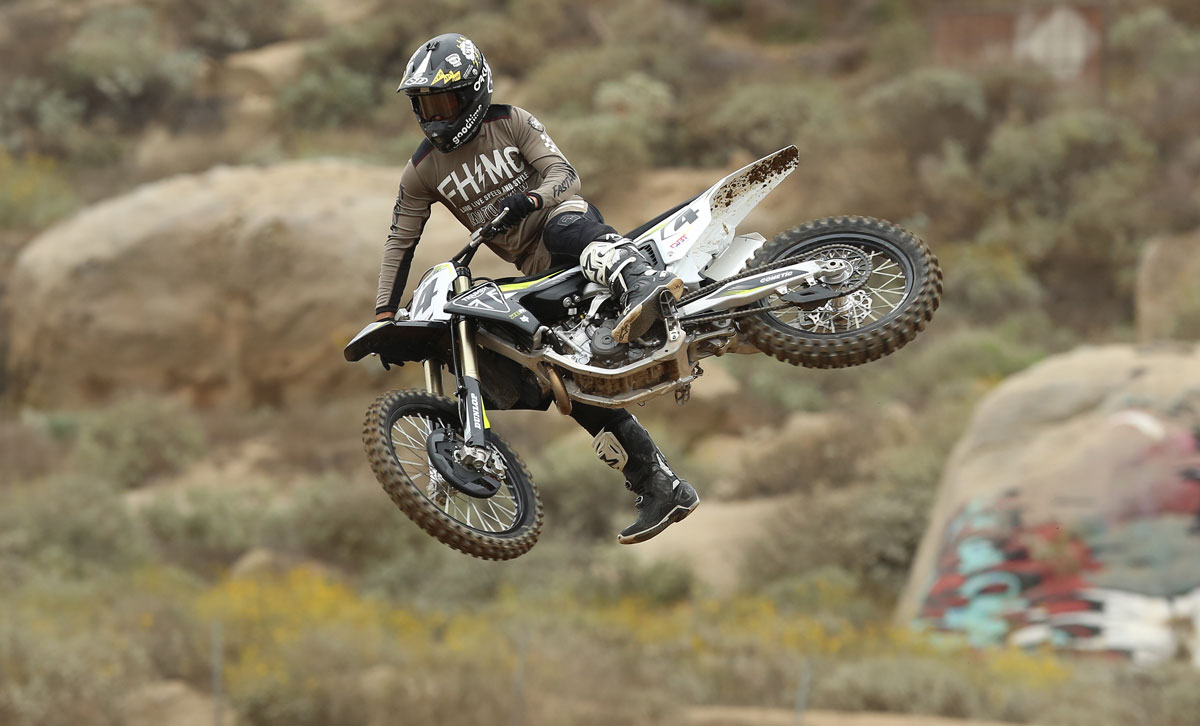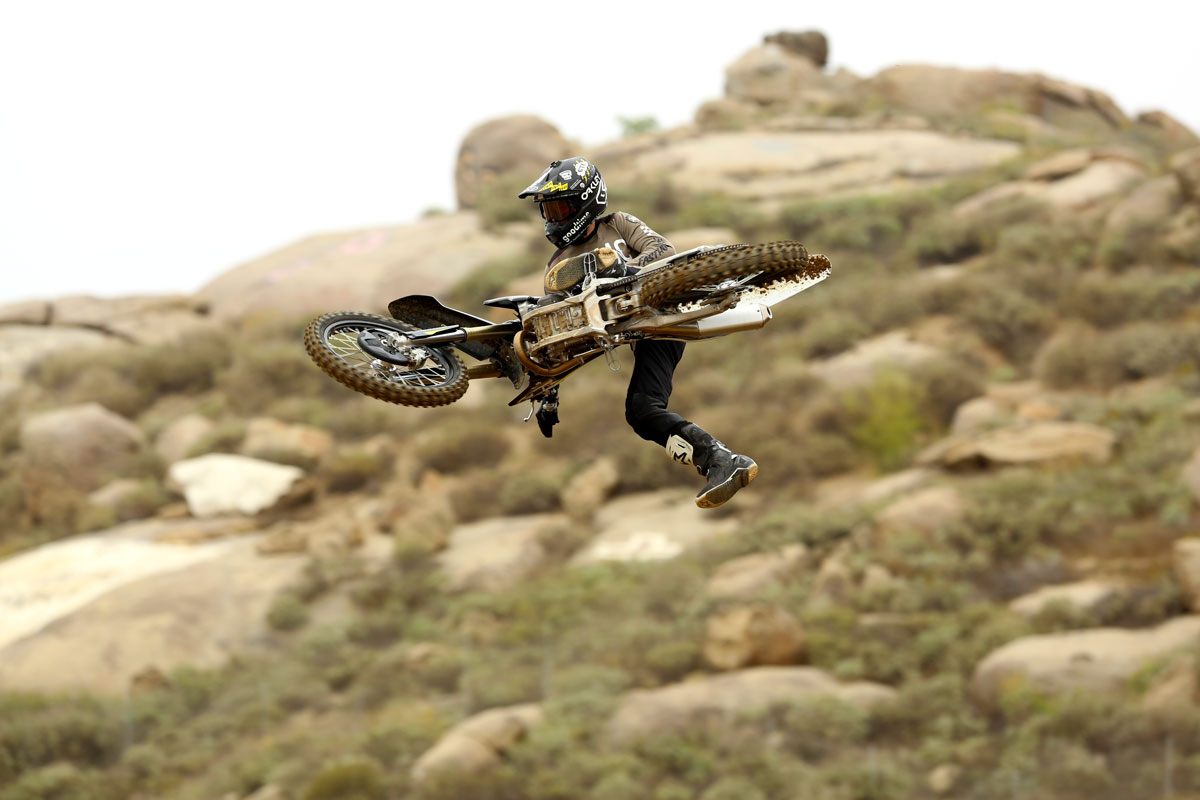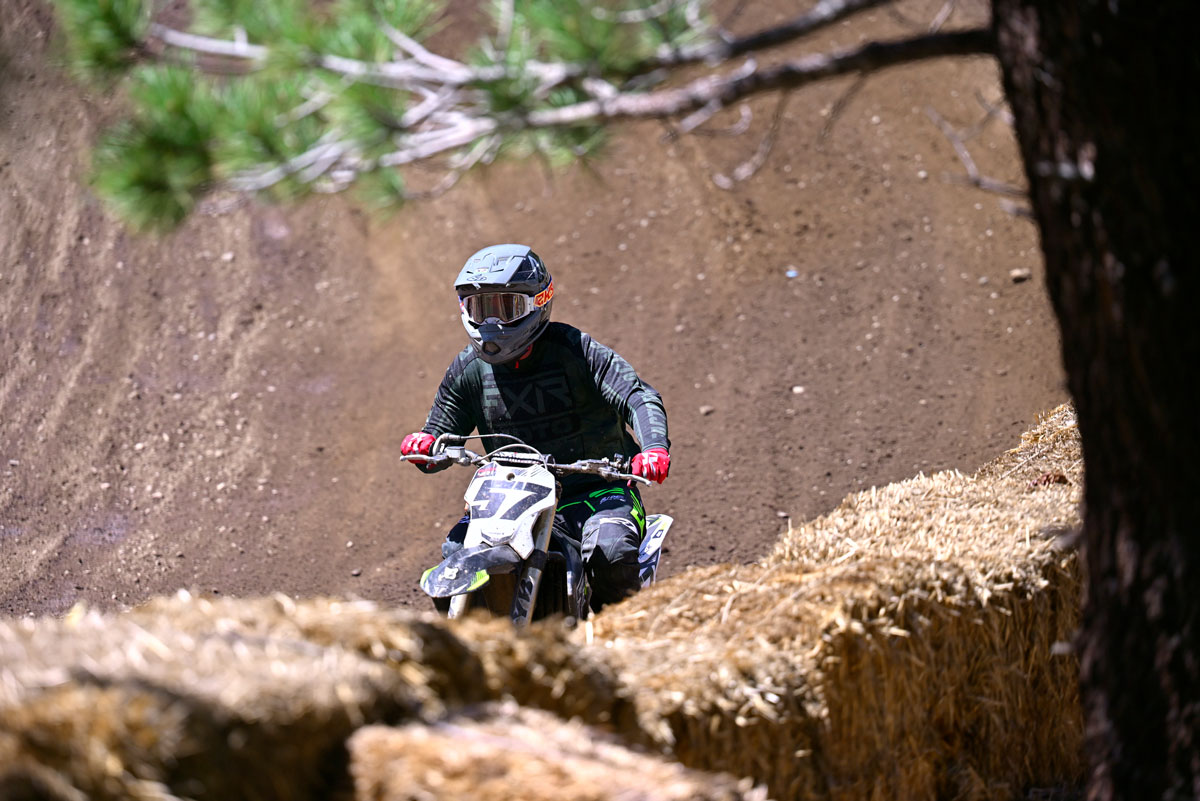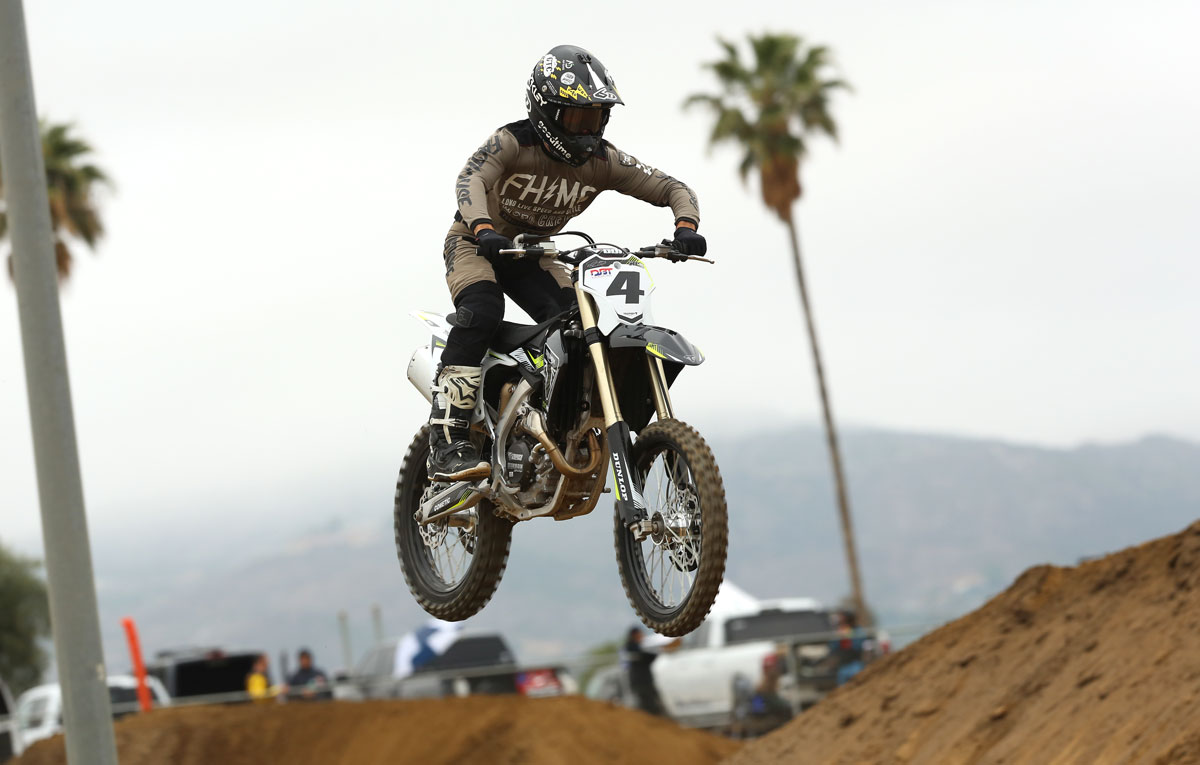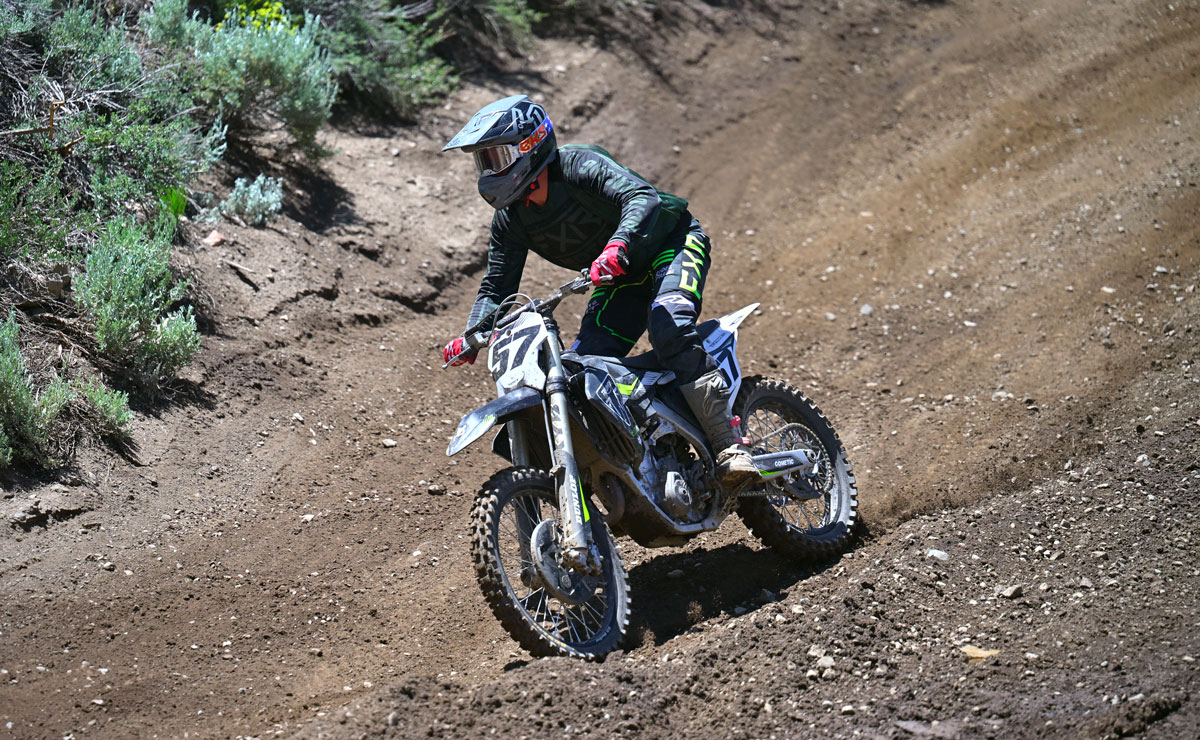2025 Triumph TF450-RC
How Real Is This New 450?
MSRP: $10,995
- Very-easy-to-adapt-to chassis
- KYB Suspension
- Smooth, easy-to-ride power
- No real bad traits
- Unproven reliability
- Could use a tad bit more bottom power
- Comes stock with a 110 series rear tire
Introduction
- Very easy to adapt to chassis
- You can't go wrong with KYB Suspension
Earlier in the year we were wined and dined with an amazing excursion to Triumph’s Motocross race team headquarters in Georgia to debut the TF 450-RC for the first time. DBT tossed a few legs over the all-new “from the ground up” 450 and we spit out our initial thoughts. We kind of use the term “first time” loosely, considering the TF 250-X utilizes the identical chassis, and we already had some time on that machine. And when we say identical, we mean it, even the fixed, welded-in engine mounts are the same. You can literally swap frames between the two machines or engines depending on how your brain thinks.
We have since put our paws on the 450-RC in California and have pounded out some hours aboard the Triumph visiting most of the popular So Cal stomping grounds such as Glen Helen, Fox, Perris, Barona Oaks, and Mammoth Mountain. Adapting to the Triumph RC for our test riders is and was an easy process and did not take a matter of days, but some would say it was a matter of laps or minutes. After nearly 20-hours on the new mount, our opinion has not really deviated much from our initial impression riding the Georgia clay. What makes this bike so good is it doesn’t have any bad traits or funky feel. Yet conversely, there are no huge “oh wow” traits either. The Triumph 450 really sits in the pocket of performance and very easy to adapt to comfort. They really did their research to build an everyman’s 450 motocrosser. Really fun to ride—stable, effortless, great suspension, and a very smooth but still pretty robust engine package. For 90% of riders, the Triumph can be ridden to 100% of their ability with little or no changes. We did a host of little adjustments but none of them broke the bank by any stretch of the imagination. Yes, an exhaust could add a little bottom-end boost but it’s not a deal breaker.
The biggest unknown on this new steed—how reliable is it? There is no base or history to feed off. Yes, Triumph is a solid brand in the street world but has no history in motocross, unless you go back in time over 50 years—LOL. Our test mule has been pretty solid and except for oil changes and normal maintenance, we have not encountered any issues. Yes, the faceless web has talked about a bike or two with a transmission issue and a few other minor issues. But no brand is without isolated problems these days. We have seen brand new Yamahas with blown-up engines; KTM cam issues and KTM transmission issues; Kawasaki with a recall and stop sale order this year. Only time and hours on the new TF 450-RC will tell the truth. For 2026, Triumph has already announced updates to the TF 250-X. In our camp thus far, there is no reason we would not want to buy and ride the new Triumph 450.
Changes
- Its new, all new.
This list is going to be fairly short because like we noted above, this is a brand-new machine from the brains of some savvy engineers, seasoned industry names like Dave Arnold, Ivan Tedesco, and probably a host of fancy computers to spit out the designs. Triumph didn’t try to reinvent the wheel like Cannondale attempted and even BMW many moons ago. It seems like they did their homework and drew from what works from across the board and built their own version.
Power
- Smooth and easy to ride deliery
- Its faster than it actually feels.
- The power delivery really complements the chassis.
The engine package is unassuming but mighty at the same time. Maybe not as of an aggressive feeling like a YZ450F, yet robust, easy to ride, and usable for the masses. The delivery is very linear across the board and puts the power to the ground. There are a few tracks where riders wanted the delivery to ramp up a little faster going into the mid. A few of the optional maps help but the gains are mostly felt more past the mid-range. Some tracks it’s unnoticeable where others you can sometimes find yourself trying to figure out if revving out second gear is better, or using third and waiting for the power to ramp up for a moment is more advantageous. Again, lighter riders or faster riders who carry more speed through the corners may not feel the same.
What makes this engine so good is it’s smooth and easy to ride. The delivery does not upset the chassis under acceleration and several test riders commented it sucks less energy out of them during longer motos. Some always think smooth and linear means slow and boring. The Triumph is not slow or boring. Maybe not arm-jerking fast but it’s fast, just twist the throttle to the stops. We could use a little more bottom to mid pull.
We did try to do a similar exhaust mod that helped the stock 2024-2025 KX450. The rear of the muffler has a baffle and a screen for sound. We pinched back the baffle and removed one of the screens. We noticed a little ramp up but not as much gain as we felt on a KX450. Just like the KX, the Triumph felt like it wanted to run harder up top over making gains down low.
We do suggest downloading the tuning app and messing with the settings. You might find a setting you really like. For us, we switched back and forth from stock to the Expert map with just the advanced ignition downloaded. This is the light on setting for that download, stock is always light off.
Performance is very subjective these days and a lot of this has to do with current sound regulations, especially in the EU. In order to achieve this, manufacturers are forced to restrict intake and exhaust to meet the new sound regulations.
The engine felt a little different from the first encounter back east and we realized Triumph changed the gearing to a 48 on the production bikes. For our fast and 195-lb vet test riders, the 49 was a better choice with a longer chain and helped bridge the second-third gear gap. For the Mammoth Mountain test, we actually went with a 50 because of the 8,000-foot elevation power rob.
We have heard some aftermarket exhausts help liven up the bottom to mid pull but we have yet to get a chance to test a unit.
The clutch is solid but the engagement is a little long and does not offer that insta-bite when you need to snap the clutch to make quick power. It’s easy to modulate the power but almost feels a little more off-road and lacks that harder snap some riders look for. Clutch abusers might wear out stock plates faster than normal but we have not had any issues thus far. We did try a semi-affordable update from Hinson Racing. They offer a simple fix that includes a stiffer spring with steel and fiber plates. Hinson increased the steel plate count and starts with a steel and ends with a steel unlike the traditional stock setup. The change was noticeable but not night and day, yet it did add the bite and shorter engagement we were looking for. It’s a simple upgrade and runs $299.99. This is a good option if you’re looking for an improvement and/or you end up wearing out your stock clutch.
Some of the above is nitpicking, yet overall, even in bone stock trim, 90% of 450 riders will appreciate the delivery and how it accompanies the power delivery.
Suspension
- The package is plush but still can be ridden agressive
- No odd defections and handels the chop really well
This is a no-brainer—KYB, KYB, KYB. This alone probably really contributes to the chassis’ overall performance and comfort of the bike without feeling soft or under-sprung. In fact, for light 450 riders 170 lb or under, it might be over-sprung. The KYB really gels with the Triumph chassis and offers comfort and performance for a variety of rider levels. Bottoming control is amazing and the stock setting doesn’t give off any odd traits. The clickers for most of our testers were pretty close, yet we did go a little stiffer on compression and slowed down the rebound front and rear a few clicks. Our 200-lb rider wanted to retain a plush feel in the fork but also increase the holdup on the fork through g-out holes and some steep jump faces. For that we increased the air spring effect by raising the oil height and added 10cc per leg.
Race sag is for sure rider preference. Our range went from 101mm-104mm for the most part. Our vet riders preferred the comfort of 104mm while the faster riders liked the front-end bite in the 101mm range. We also noticed the rear shock held the wheel to ground better once we went with a wider Dunlop MX34 120 series tire over the 110 stock size.
Not all KYB forks are the same, Triumph said they had several fork tube options to test before they landed their final settings. Most bikes we have tested that sport KYB often have that added square edge absorption over production Showa components, Triumph being part of that group.
Chassis - Handling
- The chassis just works
- Most riders felt really comfortable after only a few laps
The chassis is what really makes this bike shine. No one area shines super bright but nothing is in the shadows either. Every rider we had hop on the TF 450-RC came back after a lap or two and praised how quicky they felt comfortable on the bike with no changes or setup. The aluminum backbone chassis style is not new, Yamaha ran this style years ago, and Triumph has really been able to make it work on their 250 and 450.
Some of the comfort and performance has to do with the entire package but it all starts with the frame, frame geometry, and works its way out from there.
Comfort and easy to ride are the key words, but race-like as well is in its vocabulary. The chassis feels fairly light, jumps straight, and does not do anything funky. We will never say it has best-in-class turning or feels lighter than the rest but it does not feel lazy, sluggish or heavy either.
A lot of the overall chassis feel includes the KYB suspension as well as the linear power delivery that doesn’t upset the chassis and puts traction to the ground in most conditions. Chassis setup is also important and finding that ride height and fork height does make a difference. Don’t be afraid to adjust to fine-tune the comfort level and chassis bias. The Triumph chassis is so in the pocket and unbiased in either direction, it can be difficult to critique, it just worked for our test riders who got a chance to spin some laps.
Conclusion
- For a first year 450 to the market, Triumph built a 450 for the masses.
Triumph is no joke and they are serious when it comes to their motocross program. They also just released dedicated off-road bikes as well to round out their line.
The TF 450-RC comes from the factory with quality components like Brembo brakes, DID rims, ODI bars and grips, Hinson clutch cover, Dunlop tires, Wi-Fi, and an XTrig holeshot device to highlight a few items.
What makes the new Triumph TF 450-RC so good is that it doesn’t do anything bad. From the engine to the chassis to the suspension, they just work and offer comfort as well as performance to the masses who dare to toss a leg over a mighty 450 motocrosser. It might not have one standout trait but when you combine all of the little pieces, that is its standout trait. Some riders may think they want that super-aggressive engine and chassis, but after five laps, come back and talk to us after you’ve spent some time on the new Triumph. We are aware the bike has yet to prove its long-term reliability, yet if it’s solid, there’s no doubt that the TF 450-RC will fit into the lineup of 450s anywhere from first to fourth depending on the rider.
Recent Product Tests
Leave a Reply

